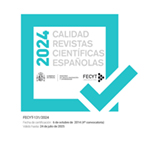Dangerous Subjects? Spanish Repatriates from the USSR in the Province of Vizcaya, 1956-1963
Abstract
Between 1956 and 1959, at the end of the Cold War’s first full decade, 1900 Spaniards – niños, political exiles, former divisionarios, pilots, aviators– repatriated from the USSR. Departing from existing scholarship that has examined the repatriates’ “integration” into Spanish society under the Franco regime, this article explores their agency, that is, the choices they made as they interacted with the institutions of the Franco regime and other Spaniards, despite close surveillance by Franco authorities and interrogation by the CIA under “Project Niños.”The article offers the first study of repatriation in a single province: Vizcaya, to which more repatriates returned than elsewhere. Following repatriates from the USSR, where they constructed an “imaginary Spain” in preparation for displacement, to their reunions with family they had not seen for nearly two decades, to their search for decent jobs and apartments, the essay demonstrates that repatriates did not necessarily see themselves as passive recipients of the regime’s guidance in being “incorporated” into Spanish life. By pressing their needs for housing, employment, validation of their Soviet degrees, and, at times, to leave Spain for the USSR or elsewhere, some repatriates succeeded in making their lives more tolerable. Repatriates enlisted Spaniards on other continents in transnational advocacy networks on behalf of repatriates who had been detained, arrested, and, in some cases, tortured. They thereby brought the regime’s repression of the repatriates to the attention of international institutions with power to shape the court of world opinion.Downloads
Article download
License
In order to support the global exchange of knowledge, the journal Cuadernos de Historia Contemporánea is allowing unrestricted access to its content as from its publication in this electronic edition, and as such it is an open-access journal. The originals published in this journal are the property of the Complutense University of Madrid and any reproduction thereof in full or in part must cite the source. All content is distributed under a Creative Commons Attribution 4.0 use and distribution licence (CC BY 4.0). This circumstance must be expressly stated in these terms where necessary. You can view the summary and the complete legal text of the licence.











